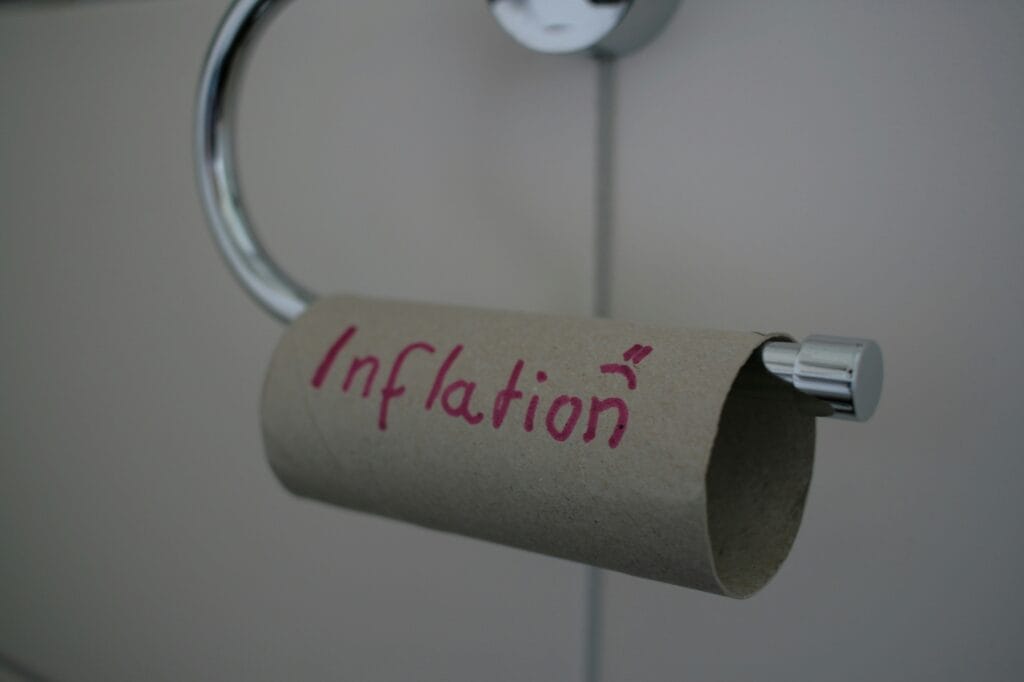The economy is always fluid, and it can be difficult to understand, especially if you’re not comfortable with finances – the question becomes, should I save money in 2025?
The answer to this is quite straightforward but you should consider a number of factors before deciding what to do with your money.
Let’s discover whether you should save money in 2025.
Savers’ Market Vs Borrowers’ Market
Typically, economists will outline whether the market is a savers’ market or a borrowers’ market. In the same way stock market analysts will evaluate whether it trends are bullish or bearish.
A borrowers’ market is defined by low borrowing interest rates.
A savers’ market is defined by higher savings interest rates.
When compared to one another, the weighted average will define whether we are in a saving or borrowing market.
Currently with borrowing interest rates remaining stubbornly high due to the Bank of England base rate, we are considered to be in a savers’ market because interest rates on savings accounts are much higher than usual.
Comparing Borrowing Interest Rates and Savings Interest Rates
This is easy to do, and you can do a rough comparison from the comfort of your own home.
In the UK at time of writing the average borrowing rates are:
- Personal Loans – 11.02%.
- Credit Cards after introductory offers – 35.78%.
- Residential Mortgages – 5.41%.
For savings accounts, the average interest rates at time of writing are:
- ISAs (All types) – 4.5%.
- Instant Access Savings Account – 2.66%.
- Fixed Term Savings Account – 4%.
When comparing side by side, it is easy to see you will pay more interest when borrowing than you would earn from saving. It is also clear if you are in a position where you want to make an immediate purchase, it is best to use your savings than take out additional borrowing.
The Rules for Deciding When to Borrow and Pay Back Debt
If you have an existing loan or borrowing, you need to compare the interest rate on the product you have and see if you can obtain more by saving.
For example, if you have an old personal loan taken when rates were much lower (say 2%), it would be better to save money and continue your monthly payments as the cost of borrowing is less than the amount you will earn in interest from saving.
Conversely, if you have savings currently and are looking to buy a car or furniture, you should compare the interest rate of the borrowing to your savings interest rate. In almost all cases currently, it would be better to use existing savings as the amount of interest you will generate will not be higher than the borrowing interest rates.
Be Wary of 0% Offers
The exception to this is 0% introductory offers.
You should be fine to take a 0% offer as long as you can repay the debt in full before the offer ends.
The way 0% lenders make money is because they know a certain percentage of customers will not repay before the 0% term ends and then often charge punitive interest rates after the 0% expires.
When approaching this type of borrowing, do an advanced budget to ensure you can pay the debt back in the introductory term and make sure you do – no ifs or buts. It is about being financially responsible.

Should I Save Money in 2025?
Despite us being decidedly in a savers’ market – it is almost certainly not the best option to save money currently.
This is because of a number of factors:
- ISA Cap Remaining Unchanged
- The Inflation Rate
- Shrinkflation
ISA Cap Frozen
I could go into a tirade about how harmful the Rachel Reeves’ Labour budget is, but I will refrain and just explain what problems it poses to you.
The first is the ISA cap freeze announced. Historically, ISA allowances have increased which has served two purposes, it allows people to accumulate more wealth and also beat inflationary pressure.
By freezing the ISA cap, the government is essentially saying no one should be able to accumulate more wealth.
Bearing in mind the ISA allowance is only £20,000; we are not talking about life changing sums of money.
The Inflation Rate
The Labour budget is inflationary. When that inflation bites is dependent on market forces, but there will be a large rise in inflation over the coming years.
For non-partisan purposes, the last Conservative government caused a tremendous spike in inflation by massive government spending during the Covid-19 pandemic. This inflation really took hold about a year or so later.
By this time in 2025, we should expect inflation to once again be creeping up.
The current rate of inflation in the UK is 2.2%.
When considering your savings interest rates, you should factor in this inflation rate. For example, your average instant access savings account is only giving you 0.44% in real monetary terms.
If the inflation rate goes up, it will diminish the returns you have on your savings further. When the inflation rate turns your savings rate negative in real monetary terms, there is little point in saving.
For example, if the inflation rate goes to 4.6%, that will negate all average savings rates we discussed earlier – in short, by saving you are losing money.
Shrinkflation
Inflation doesn’t just hurt consumers. Companies providing products and services find their costs increasing.
For example, a chocolate manufacturer will find their cacao costs increase alongside their energy prices and the fuel required to transport their products to stores.
Typically, companies will try to maintain price points as much as practicable because they know consumers are put off by rising prices.
A sneaky way to do this is by making their products smaller. It is no secret your Mars Bar has shrunken in size over time alongside incremental price increases. This is called shrinkflation and is a hidden cost of inflation.
Shrinkflation is More Than Food and Drink
It is hard to gauge the rate of shrinkflation as products are highly variable, but it could well be the case the product you’re saving for is impacted by company cost-cutting.
We tend to think of shrinkflation in terms of food and drinks, but it also extends to your high end purchases such as technology and cars. Manufacturers will often remove more expensive features or only apply them as optional extras as well as use cheaper components. In the case of cars, this is a significant hidden cost as although the car will be reliable for a time, the cheaper components will fail quicker, and your servicing and repair costs will increase.
A good way of visualising shrinkflation is to think of it as paying the same money for less product. In this case, less doesn’t necessarily mean size. It is parts, features, and quality as well.
Should I Save Money in 2025 – What to Consider
The first factor to consider is do you have spare income to save?
It sounds a bit stupid, but most people in the UK are finding increasingly less money to put aside as bills and the cost for goods and services increase. Your financial situation can change month on month and deciding whether to save should consider how much disposable income you have.
You may decide fixing your money into a savings account for a period of 12 months or more is unsuitable because you have noticed your disposable income reduce month on month. In this case, simply using a flexible savings account or your current account may be preferable so you can access your funds without penalty in an emergency.

What is Your Savings Goal? Should I Save Money in 2025?
If you have a definite disposable income and enough money in a rainy day pot for emergencies, you should then look at how best to save your money.
The way to discern this is to have a savings goal in mind.
Are you saving for the sake of saving or do you want to buy something specific?
If you are saving for a house deposit, you should factor in how much you will need to save and budget a little more than you expect because house prices tend to rise over time.
You should then look at products that return the best interest rates but allow you to withdraw your funds at the time of your intended purchase.
When considering products, evaluate how much your return is at risk from inflation. It might also be worth exploring investments rather than savings as the returns on some investments can far outweigh the return on traditional savings.
Lastly, check whether you are entitled to any government savings schemes as from time to time the government offers retail beating returns on safe savings products such as the Help to Save account.
Saving for Purposes Other than a House
If you intend to save for a holiday or a product other than a house, you should be a lot more cautious.
These products can be impacted by the wider economy to a greater degree and your savings likewise are equally under the same economic pressure we have outlined in this article.
It might be worth considering your appetite for risk and matching that to an investment product. Investing can be a scary word, but an example of a relatively safe investment is a Stocks and Shares ISA which also carries financial protections under the Financial Services Compensation Scheme.
While your return may not always be guaranteed with an investment, your capital deposit is protected by the FSCS when using ISAs.
For more sophisticated investors, there are a diverse range of investment products on the market that have the potential to far outstrip savings in terms of a return. You should however always seek the advice of a financial adviser so you can make an informed decision about the risks involved.
Should I Save Money in 2025 – A Definitive Answer
The Labour budget has made it abundantly clear that anyone with investments or meaningful savings will be treated harshly.
The current government has a warped notion that anyone who is working but not on or below the breadline is wealthy enough to be taxed and penalised. In reality many low and middle income households do their utmost to save as much as possible for life’s small treats like family holidays or moving house.
As a result of the Labour budget, what should and would have been a savers’ market, has become unattractive to savers and investors. It is most definitely not a borrowers’ market either. Instead, we seem to be trapped in a stagnant state where whichever way you look at how to make the most of your financial position – there are only poor outcomes.
Being financially responsible and resilient is about identifying the least problematic outcome for your circumstances and evaluating how the wider economy impacts your money. It is not an easy task, and it might take you a few hours of reviewing your goals and finances – but get it ride, and you can ride out this terrible economy and at the very least, suffer less than everyone else.
It is pretty dismal that for more than a decade people in Britain have been doing their best to make the best of terribly bad cards successive governments keep dealing them.

